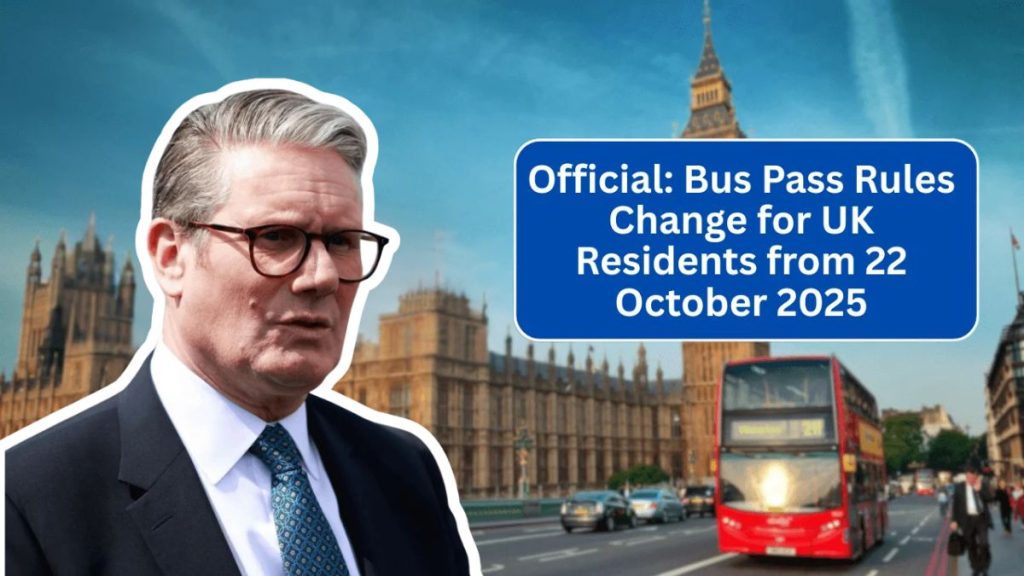Millions of older people across the UK are set to receive a significant pay rise from April 2026, as the government confirms a 4.7% increase to the State Pension under the triple lock guarantee. The uplift means that the full new state pension will rise from £11,973 to £12,535 per year, giving pensioners an extra £562 annually — or about £10.80 per week.
This is one of the largest pension rises in recent years and comes as the government pledges to protect retirees’ incomes amid ongoing cost-of-living pressures. However, financial experts warn that the increase could also draw more pensioners into the tax net because of frozen income tax thresholds.
How the State Pension Increase Works

The 2026/27 increase is being delivered under the triple lock system, which ensures that pensions rise each year by the highest of:
- Average wage growth,
- Inflation (CPI), or
- A minimum of 2.5%.
For the 2026/27 financial year, average wage growth of 4.7% was the highest measure, setting the rate of the increase.
This means pensioners receiving the full new state pension will now get around £241 per week, or £12,535 per year. Those still on the basic state pension (pre-2016 system) will also see a similar 4.7% rise.
Overview of the 2026/27 Pension Changes
| Key Area | Details for 2026/27 |
|---|---|
| Annual Increase Percentage | 4.7% (based on wage growth) |
| Annual New State Pension | £12,535 (up £562 from £11,973) |
| Weekly New State Pension | £241 approx. |
| Triple Lock Basis | Highest of inflation, wages, or 2.5% |
| Reason for Increase | Wage growth of 4.7% |
| Effective From | April 2026 |
| Impact on Tax | More pensioners to pay income tax |
| Tax-Free Allowance Status | Frozen at £12,570 |
| Policy Guarantee | Triple lock remains until end of Parliament |
What Is the Triple Lock — and Why It Matters
Introduced in 2010, the triple lock is one of the UK’s most important retirement protections. It ensures that state pensions keep pace with the real cost of living, shielding retirees from inflation and wage stagnation.
For the 2026/27 tax year, wage growth of 4.7% has set the pace, meaning pensioners will benefit from one of the most generous increases in recent years.
However, the policy’s future remains uncertain beyond the current Parliament. Critics argue that the triple lock has become financially unsustainable, particularly during periods of high inflation or strong wage growth. Supporters, on the other hand, insist it’s vital for protecting older citizens from poverty.
The £562 Increase Explained
The upcoming 4.7% boost means anyone receiving the full new state pension will see their payments increase from:
- £230.80 per week in 2025/26 → to around £241 per week from April 2026.
That’s an extra £562 a year.
For pensioners relying primarily on their state pension, this increase offers welcome relief against rising costs for essentials like energy, food, and rent.
The government has said this increase is part of its commitment to help pensioners maintain purchasing power during tough economic conditions.
The Tax Trap: Why Some Pensioners Could Pay More
While this increase is undeniably positive, financial experts have raised a major concern: the impact of frozen tax thresholds.
The personal income tax allowance — the amount you can earn before paying tax — remains frozen at £12,570 until at least 2028. With the state pension now reaching £12,535, retirees who receive any other income — such as private or workplace pensions, savings interest, or part-time work — could find themselves pushed into the tax bracket for the first time.
This effect, known as “fiscal drag,” means that while pensioners’ incomes increase on paper, their real spending power could be reduced by tax deductions.
For example:
- A pensioner receiving the full new state pension (£12,535) and £1,000 from a private pension will now pay tax on £965 of their income.
What Experts Are Saying
Experts from Spencer Churchill Claims Advice have described the increase as “a much-needed financial boost for retirees,” particularly amid continued cost pressures on energy and food.
However, they also caution that “many pensioners may see little difference in their net income due to frozen thresholds and higher tax exposure.”
Meanwhile, Age UK welcomed the rise but reiterated its call for the government to unfreeze tax allowances and expand Pension Credit uptake, ensuring vulnerable pensioners don’t lose out.
Why This Increase Matters
For millions of older Britons, the state pension remains their main or only source of income.
This 4.7% rise will:
- Help pensioners meet rising costs of essentials like groceries and heating,
- Support independence for those on fixed incomes,
- Offset some of the inflationary effects that have persisted since 2022.
Even with the tax concerns, the increase offers tangible financial relief — especially as household budgets remain stretched.
The Triple Lock: Here to Stay — For Now
The UK government has reaffirmed its commitment to maintaining the triple lock until the end of the current Parliament (expected in 2028).
Beyond that, its future could depend on economic pressures and whichever party forms the next government.
Economists argue that while the triple lock protects pensioners, it also puts increasing strain on public finances, with the annual state pension bill already exceeding £110 billion.
However, political pressure to maintain it remains high — with pensioners forming one of the most influential voter groups in the country.
Preparing for April 2026
To ensure a smooth transition when the increase takes effect, pensioners should review their income and tax situation ahead of time.
Here’s what you can do now:
- Check your State Pension forecast via GOV.UK.
- Review your total income (including private pensions and savings).
- Use HMRC’s tax calculator to estimate your tax liability for 2026/27.
- Consider Pension Credit if your income remains low — it can boost weekly payments and open access to other benefits.
- Speak with a financial adviser for personalised guidance on tax efficiency.
Expert Insight: The “Fiscal Drag” Problem
According to finance analyst Rachel Evers from The Pension Institute, the combination of rising pensions and frozen tax allowances will have a lasting effect:
“While pensioners are rightly getting more support through the triple lock, frozen tax thresholds mean the government effectively takes back a slice of that support through taxation. It’s a stealth tax by any other name.”
Evers adds that unless thresholds rise, an estimated 1.2 million additional pensioners could begin paying income tax by 2027.
The Numbers in Context
To see how far pension payments have come under the triple lock:
| Year | Annual Pension Increase | Reason |
|---|---|---|
| 2023/24 | 10.1% | Record inflation post-pandemic |
| 2024/25 | 8.5% | Strong wage growth |
| 2025/26 | 3.1% (projected) | Inflation stability |
| 2026/27 | 4.7% (confirmed) | Wage growth leads triple lock |
These figures show how the triple lock continues to provide a meaningful buffer during turbulent economic years.
Balancing Reward and Risk
While the 2026 pension increase is good news, experts caution against complacency. The uplift could accelerate long-term fiscal pressure on the Treasury, which already spends roughly £1 in every £6 of public funds on pensions and related benefits.
Still, for individuals, the rise offers relief from inflation’s lingering impact — particularly for single pensioners, who are statistically more vulnerable to financial hardship.
Government Response
In a statement, a Department for Work and Pensions (DWP) spokesperson said:
“The government remains fully committed to the triple lock and to supporting pensioners through the cost-of-living challenges. The April 2026 increase will ensure older people continue to receive fair and sustainable support as part of our long-term economic plan.”
The DWP also urged eligible pensioners to apply for Pension Credit, noting that around 850,000 people still miss out on this valuable benefit each year.
Frequently Asked Questions (FAQs)
1. How much is the new state pension from April 2026?
The full new state pension will increase to £12,535 per year, or about £241 per week.
2. Why is it increasing by 4.7%?
The rise is determined by the triple lock, which bases increases on the highest of inflation, wage growth, or 2.5%. Wage growth reached 4.7%, triggering the uplift.
3. When does the new payment start?
The increase will take effect from April 2026, covering the 2026/27 financial year.
4. Will pensioners pay more tax because of this increase?
Possibly. The personal tax allowance remains frozen at £12,570, so more pensioners may now cross that threshold and become liable for income tax.
5. Will the triple lock continue after 2026?
The government has pledged to maintain it until the end of the current Parliament, but its future beyond that is not guaranteed.



















